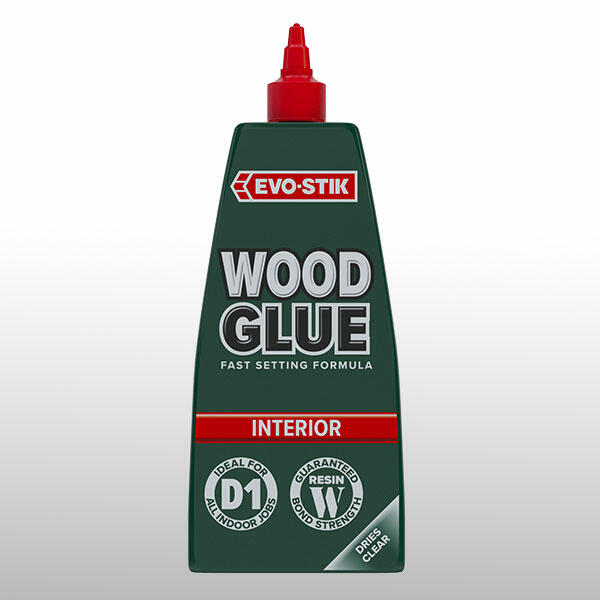How to store glues at home
Have you ever needed a repair glue for a quick fix, only to find it dried out and is unusable? Proper glue storage is key to ensuring your adhesives last and remain effective. Whether you're storing super glue, wood glue, or other adhesives, a few simple guidelines will help prevent waste and keep your glue in optimal condition so you're ready to repair, whenever accidents occur.
Let’s explore the best practices for storing glues at home, with a focus on the specific needs of different types of adhesives.

Understand the shelf life of your glue
It's good to know that the storage information for each Bostik glue is indicated on the individual product. You're most likely to find the shelf life of your product on the back of the packaging, but this is dependent upon the type of adhesive - whether it’s a tube, tin, or cartridge, for example.
The average shelf life of most Bostik adhesives is approximately 12 months. However, depending on the chemical component of the adhesive, some can have a shelf life of up to 24 months!
There's no precise expiry date for a ready-to-use adhesive. It is more often careless storage conditions that cause them to dry out prematurely, or to lose their adhesive properties.
General tips for storing glues at home
While different types of glue have specific storage needs, there are some general tips that apply to all adhesives:
- Avoid direct light and heat: Store glue in a cool, dark place to protect it from the elements. Heat and light can degrade the chemical compounds in adhesives, reducing their shelf life.
- Store in an upright position: Unless otherwise specified by the manufacturer, whether you're storing super glue, wood glue, or any other adhesive, keep the containers upright to avoid clogging and to ensure easy use in the future.
- Out of reach of children: Always store glues in a safe place, out of reach of children. Ideally, they should be kept in a locked cabinet or on a high shelf to prevent accidents.
- Clean before closing: One of the most important tips for keeping your adhesives for as long as possible, be sure to clean the application nozzle before closing. If you're working with a tin of adhesive, wipe the edges of the container so that it can be easily re-opened, even after months of storage. If it's a tube or cartridge, be sure to clean the nozzle with a dry cloth before replacing the cap tightly in place after use.
Now let's get into specific glue storage…


How to store super glue
Super glue is a versatile adhesive but can dry out quickly if not stored correctly. Heat and humidity are its biggest enemies, as both can accelerate the drying process. Here are some tips to help you store super glue effectively:
- Store in a cool, dry place: Super glue should be stored in the coolest area of your home to maintain its potency. If possible, dedicate a small spot in your refrigerator for your super glue. The cold temperature will help slow down the chemical reactions that cause the glue to dry out.
- Seal the container tightly: After each use, make sure to clean the nozzle of the glue with a dry cloth and tightly seal the cap. This minimises exposure to air, which can cause the adhesive to dry prematurely.
By following these simple steps, your super glue will be ready whenever you need it, whether for small household repairs or other tasks.
How to store wood glue
Wood glue is another common adhesive that needs special attention when it comes to storage. Wood glue is often used for furniture repairs, woodworking projects, or general DIY tasks, but improper storage can reduce its effectiveness. Here's how to store wood glue properly:
- Keep it in a controlled environment: Wood glue should be stored in a dry, cool, and dark area to prevent it from deteriorating. Exposure to extreme temperatures, especially heat, can cause the glue to break down.
- Protect from moisture: Wood glue is particularly susceptible to moisture, which can weaken the adhesive properties over time. Be sure to keep it in a sealed container and away from humid areas.
- Regularly check for expiry: Most wood glues have a shelf life of 12 to 24 months. While there may not be a strict expiration date, it's important to periodically check if the glue has thickened or lost its bonding strength. If it has, it’s time to replace it.
By paying attention to the environment in which you store your wood glue, you can ensure it remains effective for the long term.


Empty or expired tubes: How to sort waste?
Bostik product packaging varies across the type of adhesive, as different materials are required to house the different glue formulas. It goes without saying that not all the packaging components should be disposed of, or recycled, in the same way. So, when you throw away your empty or expired tube you should:
- Separate any cardboard and plastic packaging
- Dispose of the cardboard packaging in the paper bin
- Dispose of the plastic packaging in the plastic bin
- Dispose of the tube with the adhesive residue at the waste disposal centre for those that can be recycled
Conclusion
Learning how to store glues at home correctly can save you time, money, and frustration. Whether you're using super glue, wood glue, or another type of adhesive, following proper storage guidelines will ensure that the adhesive remains effective for as long as possible.
Keep your glue in a cool, dry place, protect it from air exposure, and always store it upright. With these tips, you can say goodbye to dried-out glue.










